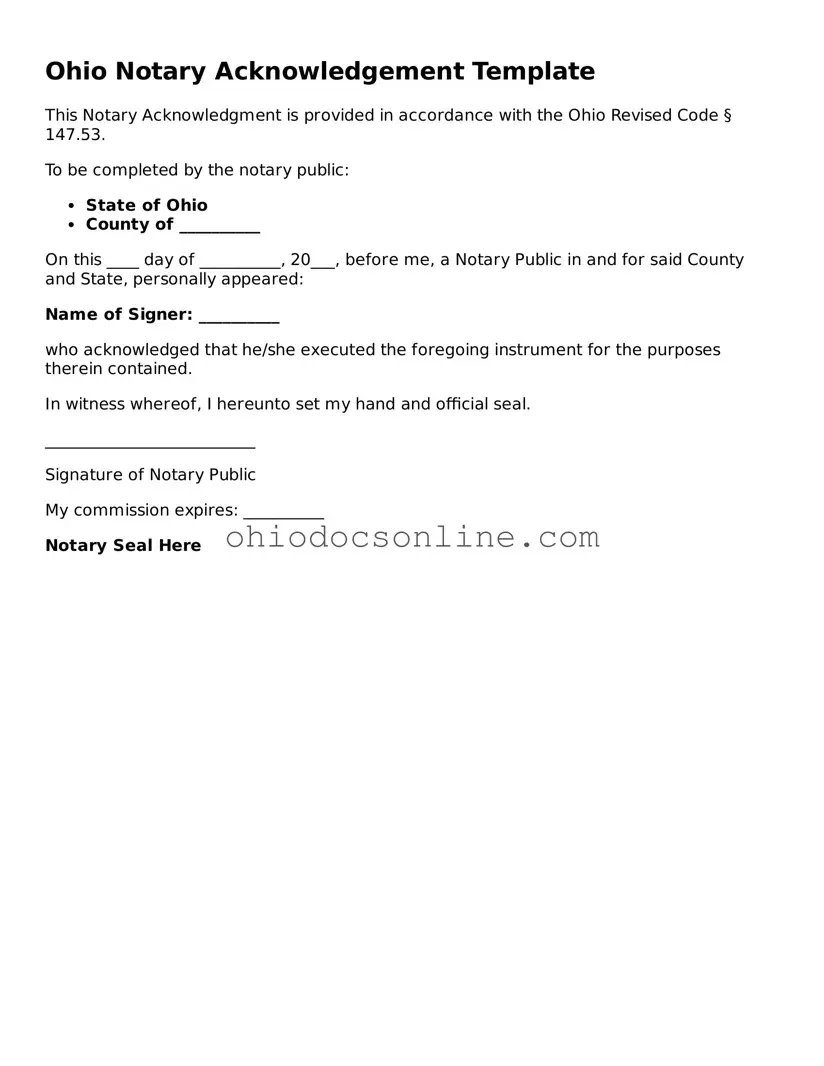Printable Notary Acknowledgement Template for Ohio
The Ohio Notary Acknowledgement form serves as a legal document that verifies the identity of a signer and their willingness to sign a document. This form plays a crucial role in ensuring the authenticity of various legal transactions. Understanding its components and requirements is essential for anyone engaged in notarization in Ohio.
Open Editor
